MICORRIZAS: Are they saviors of the terrestrial ecosystem?
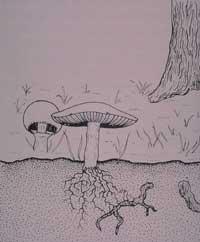
At the time this association occurs, both components can benefit from certain benefits; the plant provides the fungus with post-photosynthesis carbonous compounds and facilitates, among other things, the obtaining of mineral elements and water.
Stars of the last decades
Most corporeal plants (95%) have their roots associated with one or more types of fungi (Figure 5). These paved roots are known as mycorrhizas. The word comes from the Greek mukes onddo and rhiza subrai.
For the reasons set out below, society has set its eyes on two elements, sometimes encouraging the production of the fungus and sometimes the production of trees.
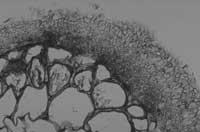
As the studies on mycorrhizae are deepened, the types of mycorrhizae that are distinguished by their morphological and anatomical characteristics are added, as well as the identity of the fungi that participate in the association. If mycorrhizas were initially classified into two main groups, seven groups can now be distinguished. In any case, the following three groups remain fundamental: ultrasound or ectomycorrhiza, endotrophic mycorrhiza or endomycorrhiza and endotrophic mycorrhiza or ectendomycorrhiza
Remember the life cycle of these fungi to know the function of each structure. Fungi are heterotrophic living beings, so they take advantage of other living beings to obtain carbon compounds; mycorrhizal fungi, thanks to their mycorrhizal structure, will obtain compounds from plants; fungi are used as energy source for the growth of their vegetative bodies, the mycelium. They will only become carpophores in the face of certain special conditions that will release meiospores, that is, dispersion units.
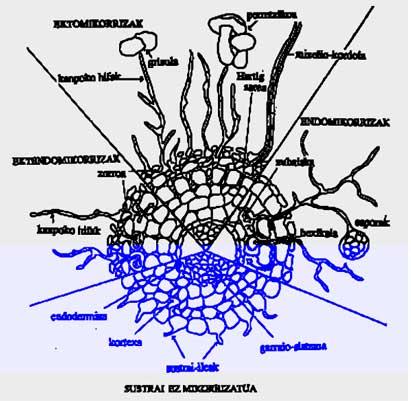
Morphology and anatomy
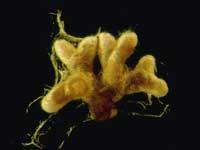
It is relatively easy to differentiate morphology from certain mycorrhizal roots from the secondary unmycorrhized root. However, the use of a microscope is mandatory to differentiate others. The aforementioned classification is based on the location of cross-sectional hyphae to the root.
Ectomicorrizas are easily separable. The fungus develops a striking layer called “cap” around the secondary roots. Fungal hyphae are also introduced into the root bark and only develop between cells. The network developed by hifs is called Hartig (Figures 2 and 3). Only 3% or 5% of known plants develop ectomycorrhiza, although they play a prominent role in forestry activity.
The endomycorrhiza may have a fine mesh on the outside of the root, but it is evident along the tissues of the root; they usually form intracellularly vexsicles and shrubs (Figure 2). This type of mycorrhiza is the most widespread among plants and 90% of the plants we know have endomycorrhiza. Their role in agriculture is of paramount importance.
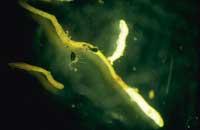
Ectendomycorrhiza combines the characteristics of the two previous groups: in addition to the sheath, it is introduced into the root cells, where the hyphae spirals are separated (Figure 2). This type of mycorrhiza has been observed in several trees and shrubs and subgroups have been made according to the sheath and Hartig network.
For classification, in addition to morphology and anatomy, the fungal group is an important criterion. The dichotomy form of Mikorriz is the most indicated. A mycorrhiza or ectomycorrhiza, in particular, will take its morphological and anatomical characteristics by the species of fungi or trees. Depending on this, mycorrhizal forms can be differentiated. The most common forms are dichotome, unbranched, pinar-monopodium, irregularly pinnate and coraline (4., 5th, Figures 6 and 7).
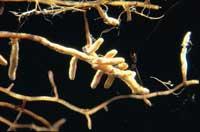
In general, the basic body of fungi is a rigid structure. On the other hand, your organization is very important to complete the classification of mycorrhizas. These firm structures are organized in pseudotissues and two are the basic ones: the plektenquima, that is, when the hyphae are quiet crossed, and the pseudoparenquene, when the hyphae are very cohesive (do not forget that there are also intermediate situations). (Figure 8).
As has been said, ectomycorrhiza are by themselves less endomycorrhiza than endomycorrhiza, but they have a great importance in our territories, which micorrizan the wooded plants of temperate regions such as Betuláceos, Fagáceos, Pináceos, Salicáceos, Fabáceos, Rosáceos, etc. On the other hand, those who form this type of union develop in our society, and especially among the mushrooms, fruitful bodies as much appreciated as Amanita, Russula, Lactarius, Boletus, Suillus, Rhizopogon, Scleroderma, etc., many of the genera of the subdivision Ascotysexyedad of the Ascotyetón Gender Division.
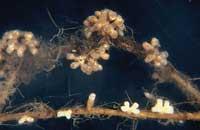
Although the presence of endomicorrices is more widespread, its incidence in the forests of temperate regions is lower, although it predominates in the rest of ecosystems. This latter type of mycorrhiza is related to the genera of the Zygomycotin subdivision. On the contrary, ectendomicorrizas are genera of the Basidiomycotina subdivision, but they are formed with some bushes and herbaceous.
Benefits and uses of Mikorriz
Mycorrhizal symbiosis plays an important ecophysiological role in terrestrial ecosystems. Mycorrhizas are efficient absorbent elements that increase the absorption of water and mineral foods. The improvement of food absorption consists in increasing the absorption surface of the root system, which reaches far; moreover, by removing some exoenzymes, the fungus can obtain organic or inorganic compounds that could be inaccessible to the plant (Figure 9).
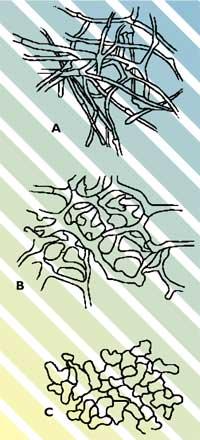
The mycorrhizal fungus provides the plant with some biological control against certain pathogens ( Rhizoctonia, Fusarium, Phytophthora). Mechanisms of protective function may include the physical barrier or the production of antibiotic and fungistatic metabolites.
In addition to these functions, the fungus can produce plant growth regulators that can influence the development and physiology of mycorrhized roots. For all this, in recent years the use of mycorrhizal has become widespread in the numerous forestry tasks. For example, it has been found that exotic species need a medley association.
Among the uses are the recovery and conservation of soils. The use of mycorrhized plants is essential for the recovery, among others, of land used in agriculture and later abandoned, deforested areas and pasture lands. However, we must take into account the absence of mycorrhizal fungi in these soils, as the success of revegetation cannot be ensured.
Mycorrhizas are widely used in degraded areas and in stressed revegetations. The use of mycorrhized plants has allowed the advance of plantations in the territories affected by pollution.
And finally, they have become a fundamental tool in improving old productions. It is the most used field by ectomikorriza. In fact, ectomycorrhiza encompasses the other uses mentioned, and it is now the hope of revegetation in barren lands. In order for hope to become a reality, nurseries encourage the production of mycorrhizal plants better adapted to the different areas (Figure 10).
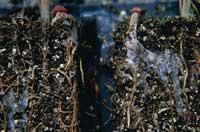
While we have highlighted the importance of mycorrhiza in the forestry sector, it can also be a good alternative to agriculture, as it can alter the use of conventional fertilizers. Endomycorrhiza facilitates the absorption of food and its ecological and economic cost is very low. They are also very important in recycling abandoned agricultural areas, as they allow the production of trees and carpophores.
In vitro plant cultures of new research it has been observed that the use of mycorrhiza is increasing and that rooting and survival in the replanting of the obtained templates is improving.
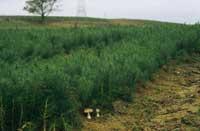
However, in addition to the improvement of the plant (without forgetting the remarkable ecological and economic effects that we have mentioned), in recent years the production of carpophobic fungi is being enhanced. We have already mentioned the ectomycorrhizal fungi, of which many genera are well known. Some have a high commercial value, such as the fungus Boletus, the cream Lactarius and the Tuber grisola. Therefore, the promotion of carpophore production and the obtaining of new crops are a current challenge.
We believe that the use of mycorrhiza will be essential and we should take advantage of the two benefit groups at once: the first is essential for the recovery of our forests, forests and territories and the second in the medium term can become a source of direct income.
Buletina
Bidali zure helbide elektronikoa eta jaso asteroko buletina zure sarrera-ontzian











